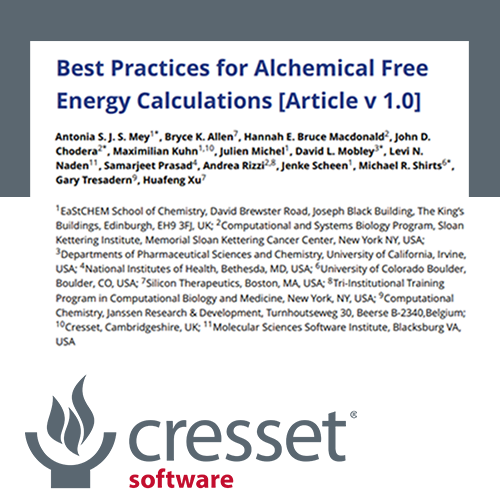Best practices for alchemical free energy calculations

Mark Mackey, CSO, reviews a new live paper, Best Practices for Alchemical Free Energy Calculations, which aims to address the issues around setting up free energy calculations.
The use of alchemical free energy calculations in drug discovery is rapidly increasing. The ability to get accurate predictions of binding affinity for a relatively modest computational cost can be a major boost to a project, when it works. There are now a number of commercially-available implementations of free energy calculations (including Flare™, our structure-based design platform) and also a wide variety of new methods coming out of academia. As with any rapidly-moving field, this can lead to problems trying to compare methods, as different companies and academic groups perform different analyses using different statistical tools. In addition, there are a number of pitfalls to avoid when setting up these calculations, some of which are hard to detect.
A new live paper, Best Practices for Alchemical Free Energy Calculations, aims to address these issues. Written as a collaboration between a wide variety of industrial and academic experts, it provides an overview of the common alchemical methods currently in use and gives guidance on when these calculations are likely to be suitable and when not. The paper provides detailed explanations of all stages of running a free energy calculation (from setting up the system, to running the simulation, to performing the analysis) and provides best practise guides for each of these. Importantly, a set of common standards for data reporting is provided, alongside pointers to open source analysis tools, so that in the future the results from free energy experiments can be reported in a way that is statistically robust and can readily be compared with other methods.
The paper is a LiveCoMS Best Practises Guide, so rather than being a fixed publication it is a living document that will be updated in the future. We recommend that anyone with an interest in running free energy calculations should read this paper.





















